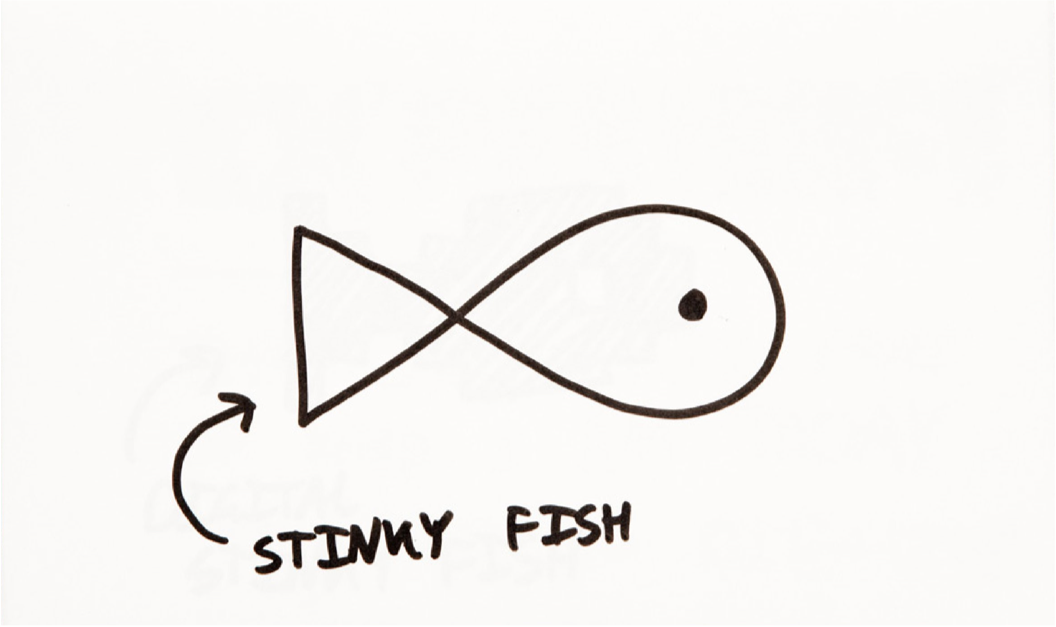There’s an exercise we use often at Hyper Island. It’s short and quite simple. It’s usually done at the beginning of a course. It doesn’t involve post-its, digital tools or any structured innovation methods. But it’s powerful and memorable. Participants talk and tweet about it, even after the course ends. It has a reputation.
It goes something like this: on day one, participants are invited to “put their stinky fish on the table.” A stinky fish is a secret fear or anxiety about the changing world. Something that I feel insecure or unsettled about, but that I know I can’t ignore. The more I hide and avoid, the stinkier it becomes. I’ve heard lots of stinky fish over the years.
format_quote“Me and my team have no clue how what to do about big data.”
“I feel like I’m supposed to use Twitter, but I just can’t get into it.”
“I feel like there are a zillion digital opportunities but I have no idea where to start.”
In the exercise, each participant comes up with one personal stinky fish, writes it down and then shares it with the group. That’s it. The exercise is short and sweet, but it has a powerful effect on the group dynamic. It noticeably opens up the mood in a group. It creates the conditions for learning.
But why?
I think the exercise, simple as it is, works well because it does two things that are important for meaningful learning.
It creates trust and common ground.
Openness in groups is a powerful trust-builder. Sharing stinky fish increases the group understanding of where each person is at and creates a foundation for the shared learning experience ahead. I better understand my own perspective in relation to others, so I can engage with them more fully.
It lowers the facade.
By identifying and sharing a fear, I reveal something to others about where I’m at and where I want to be. By opening up like this, I can drop pretence, relax, and become receptive to new knowledge and insights.
So then, it’s not actually much about fish at all.
The reason the exercise is so memorable is that it’s the first step to creating a collaborative learning environment. By starting to build a climate of trust and inviting participants to engage openly, the exercise sets the stage for deeper, more valuable learning over days that follow.
Stinky Fish is little more than a tool to apply these insights about leaning and collaboration. And they apply well beyond the scope of a Hyper Island course. In working teams and collaborative settings of all kind, openness and trust are key ingredients for success.
Try the Stinky Fish exercise and think about: how might you apply them in your context?
Alex Neuman is a learning designer at Hyper Island working with research and innovation.
This blog post was originally published in September 2014.
Credits:
Thanks to Åsa Silfverberg, creator of the Stinky Fish exercise, for input to this post.
The ideas above have their root in Luft and Ingram’s “Johari Window” and Schutz’s FIRO model.
Schutz, W. C. (1958). Firo (Fundamental Interpersonal Relations Orientation).
Luft, J., & Ingham, H. (1961). The Johari Window: a graphic model of awareness in interpersonal relations. Human Relations Training News.


